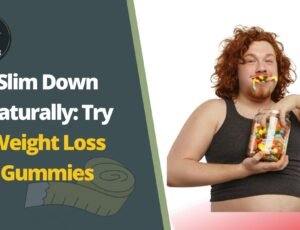
Keto-Friendly Recipes for Weight Loss

In a world where dietary trends come and go, the ketogenic diet has cemented its place as a powerful tool for weight loss and improved health. The keto diet, characterized by its low-carbohydrate, high-fat approach, encourages the body to enter a state of ketosis
Table of Contents
Introduction
where it primarily burns fat for energy instead of carbohydrates. This metabolic shift not only helps with weight loss but also offers numerous other health benefits. In this comprehensive guide, we will explore a diverse array of keto-friendly recipes designed to support your weight loss journey while tantalizing your taste buds.

What is the Keto Diet?

The ketogenic diet, often referred to as the “Keto” diet, is a dietary approach that has gained significant popularity for its potential benefits in weight management, improved energy levels, and certain health conditions. At its core, the keto diet is characterized by a distinctive macronutrient composition, with a low carbohydrate intake, a high intake of healthy fats, and a moderate intake of protein. This unique combination of nutrient ratios forces the body into a metabolic state known as ketosis, where it primarily burns fat for energy instead of relying on glucose derived from carbohydrates.
Ketosis is the key metabolic process that sets the keto diet apart from other dietary plans. When you consume a meal high in carbohydrates, your body promptly converts those carbs into glucose, which serves as its primary source of energy. However, by drastically reducing carbohydrate intake to fewer than 50 grams per day, the keto diet essentially starves the body of glucose. In response, the body shifts its energy source to stored fat, breaking it down into molecules called ketones, which can be used as fuel for various bodily functions, including the brain and muscles.
This metabolic shift is not only advantageous for individuals seeking to lose weight but also for those with specific health concerns. Research suggests that the keto diet may help manage conditions like epilepsy, type 2 diabetes, and polycystic ovarian syndrome (PCOS), primarily due to its ability to stabilize blood sugar levels and reduce insulin resistance.
To adhere to the keto diet effectively, it’s crucial to not only limit carbohydrate intake but also prioritize high-quality sources of fat and protein. Healthy fats, such as avocados, olive oil, nuts, and fatty fish, should constitute a significant portion of daily calorie intake. This choice of fats is essential for maintaining ketosis while providing essential nutrients and satiety. Additionally, moderate protein intake is encouraged, as excessive protein can potentially disrupt ketosis by converting into glucose through a process called gluconeogenesis.
Another key aspect of the keto diet is portion control and mindful eating. Because carbohydrates are limited, it’s essential to choose nutrient-dense, low-carb vegetables and monitor daily carbohydrate intake closely. Many keto practitioners also track their macronutrients meticulously to ensure they stay within their desired range.
In summary, the ketogenic diet is a low-carb, high-fat dietary approach designed to induce and maintain a state of ketosis in the body. By reducing carbohydrate intake and prioritizing healthy fats and moderate protein consumption, individuals following the keto diet aim to reap potential benefits related to weight management, improved metabolic health, and various medical conditions. While the keto diet has shown promise, it’s essential to consult with a healthcare professional or registered dietitian before embarking on any significant dietary changes to ensure it aligns with individual health goals and needs.
The Basics of the Keto Diet

The ketogenic diet, often referred to as the keto diet, is a dietary approach that has gained significant popularity for its potential benefits in weight management, improved energy levels, and certain health conditions. At its core, the keto diet is characterized by specific macronutrient ratios and metabolic processes that distinguish it from conventional diets. Let’s delve deeper into the fundamentals of the ketogenic diet to better understand how it works and why it has become a favored choice for many individuals seeking weight loss and improved health.
3.1 Low Carbohydrates
The cornerstone of the keto diet is a significant reduction in carbohydrate intake. Typically, this means limiting daily carb consumption to around 20-50 grams, although individual requirements may vary. The reason for this drastic reduction in carbs lies in the metabolic shift that occurs when carbohydrate availability is scarce.
When you consume carbohydrates, your body breaks them down into glucose, which serves as the primary source of energy. However, in the absence of sufficient carbohydrates, the body is forced to seek an alternative energy source. This is where fat comes into play.
By drastically reducing carb intake, the keto diet essentially starves the body of glucose. As a result, the body turns to stored fat as its primary energy source. This shift in metabolism from carbohydrate dependency to fat utilization is what defines the state of ketosis.
3.2 Moderate Protein
Protein intake is a crucial aspect of the keto diet, but it’s moderated. Excessive protein consumption can potentially hinder the body’s ability to maintain ketosis because excess protein can be converted into glucose through a process called gluconeogenesis. This means that if you consume too much protein, your body may produce enough glucose to kick you out of ketosis, preventing you from reaping the full benefits of the diet.
To strike the right balance, individuals on the keto diet typically aim for a moderate protein intake. This ensures that they get enough protein for essential bodily functions, such as muscle maintenance and repair, without compromising their ability to stay in ketosis.
3.3 High Healthy Fats
Healthy fats are the star of the show in a keto meal plan. Sources like avocados, olive oil, nuts, seeds, and fatty fish provide the essential fats needed for ketosis and overall health. These fats are not only flavorful but also incredibly satiating, helping individuals feel full and satisfied while adhering to the diet.
The emphasis on healthy fats in the keto diet serves two primary purposes. First, these fats are used as an energy source when carbohydrates are limited, supporting the body’s transition into and maintenance of ketosis. Second, healthy fats are essential for various bodily functions, including the absorption of fat-soluble vitamins (A, D, E, and K), hormone production, and the maintenance of healthy cell membranes.
3.4 Ketosis
The ultimate goal of the ketogenic diet is to achieve and maintain a state of ketosis. Ketosis is a metabolic state where the body primarily relies on ketone bodies, which are produced from the breakdown of fat, as its main source of energy. This shift from glucose to ketones has several benefits, making it a key factor in the success of the keto diet:
- Weight Loss: With the body efficiently burning fat for fuel, individuals can experience significant weight loss as stored fat reserves are tapped into.
- Stable Energy Levels: Ketones provide a steady source of energy, reducing the energy fluctuations often associated with carb-heavy diets.
- Improved Blood Sugar Control: Ketosis helps stabilize blood sugar levels, making it a valuable tool for individuals with type 2 diabetes or those looking to reduce their risk of developing the condition.
- Enhanced Mental Clarity: Some people report improved cognitive function and mental clarity when in ketosis.
- Appetite Control: Ketones have appetite-suppressing effects, making it easier for individuals to control their calorie intake.
In summary, the ketogenic diet is built on the principles of low carbohydrate intake, moderate protein consumption, and a focus on healthy fats. These dietary choices lead to the metabolic state of ketosis, where the body burns fat for energy, ultimately supporting weight loss and providing various health benefits. While the keto diet may not be suitable for everyone, it has proven to be a powerful tool for those seeking to shed pounds, manage blood sugar, and improve overall well-being. As with any dietary approach, it’s essential to consult with a healthcare professional or registered dietitian before embarking on the keto journey to ensure it aligns with individual health goals and needs.
Note: There might be affiliate links mentioned here. We may receive a commission if you purchase a product through an affiliate link. There is no additional charge for you. Please do your own research before making any online purchases.
Keto-Friendly Recipes for Weight Loss

Now that we’ve covered the basics of the keto diet, let’s take a look at some delicious keto-friendly recipes that are perfect for weight loss.
- Keto Breakfast Egg Muffins
Ingredients:
- 6 eggs
- ½ cup chopped spinach
- ¼ cup chopped bell pepper
- ¼ cup chopped onion
- ¼ cup chopped cooked bacon
- Salt and pepper to taste
- 1 tablespoon olive oil
Instructions:
- Preheat the oven to 350°F.
- In a large bowl, whisk the eggs and add the chopped spinach, bell pepper, onion, and bacon.
- Season with salt and pepper and mix well.
- Grease a muffin tin with olive oil and pour the egg mixture into each cup, filling about ¾ of the way.
- Bake for 20-25 minutes or until the egg muffins are golden brown and set.
- Serve hot and enjoy!
- Keto Cauliflower Fried Rice
Ingredients:
- 1 head cauliflower, grated
- 2 tablespoons coconut oil
- ½ cup diced onion
- ½ cup diced carrot
- ½ cup diced celery
- 2 cloves garlic, minced
- 2 eggs, beaten
- 2 tablespoons soy sauce
- Salt and pepper to taste
Instructions:
- Heat the coconut oil in a large skillet over medium heat.
- Add the onion, carrot, celery, and garlic, and sauté until the vegetables are tender.
- Add the grated cauliflower and cook for another 5-7 minutes, stirring occasionally.
- Push the cauliflower to one side of the pan and add the beaten eggs to the other side. Scramble the eggs until cooked.
- Mix the eggs and cauliflower together and stir in the soy sauce.
- Season with salt and pepper to taste and serve hot
- Keto Chicken Parmesan
Ingredients:
- 4 boneless, skinless chicken breasts
- 1 cup almond flour
- 2 teaspoons Italian seasoning
- 1 teaspoon garlic powder
- 1 teaspoon onion powder
- Salt and pepper to taste
- 2 eggs, beaten
- 1 cup tomato sauce
- 1 cup shredded mozzarella cheese
- ¼ cup grated Parmesan cheese
- Fresh basil for garnish
Instructions:
- Preheat the oven to 375°F.
- In a shallow dish, mix together the almond flour, Italian seasoning, garlic powder, onion powder, salt, and pepper.
- Dip each chicken breast in the beaten eggs and then coat in the almond flour mixture.
- Place the chicken breasts in a greased baking dish and bake for 25-30 minutes, or until the chicken is cooked through.
- Spoon tomato sauce over each chicken breast and top with shredded mozzarella and grated Parmesan cheese.
- Bake for an additional 10-15 minutes, or until the cheese is melted and bubbly.
- Garnish with fresh basil and serve hot.
- Keto Chocolate Avocado Pudding
Ingredients:
- 2 ripe avocados, peeled and pitted
- ½ cup unsweetened cocoa powder
- ½ cup almond milk
- ¼ cup keto-friendly sweetener (such as Swerve)
- 1 teaspoon vanilla extract
- Pinch of salt
Instructions:
- In a food processor or blender, combine the avocados, cocoa powder, almond milk, sweetener, vanilla extract, and salt.
- Blend until the mixture is smooth and creamy.
- Divide the pudding into four serving dishes and chill in the refrigerator for at least 1 hour.
- Serve cold and enjoy!
FAQs (Frequently Asked Questions)
Q1: What is the keto diet, and how does it support weight loss?
A1: The ketogenic diet is a low-carb, high-fat dietary approach that encourages the body to enter a state of ketosis, where it primarily burns stored fat for energy. This shift from glucose to fat metabolism promotes weight loss.
Q2: Can I customize these keto recipes to suit my taste preferences?
A2: Absolutely! Feel free to adjust the ingredients and seasonings in these recipes to match your taste preferences while still adhering to the keto principles of low carbs, moderate protein, and high healthy fats.
Q3: Are these recipes suitable for vegetarians or vegans?
A3: The recipes mentioned here contain animal products such as eggs, bacon, and chicken. However, you can easily adapt them to vegetarian or vegan versions by substituting plant-based ingredients and protein sources.
Q4: How can I determine the right portion sizes for these keto recipes?
A4: Portion sizes depend on individual dietary goals and calorie requirements. It’s advisable to consult with a healthcare professional or registered dietitian to calculate the appropriate portion sizes based on your specific needs.
Q5: Is it essential to track macronutrients on the keto diet?
A5: Tracking macronutrients, particularly carbohydrates, is essential to maintain ketosis. While these recipes are designed with keto principles in mind, it’s a good practice to keep track of your daily carbohydrate intake to stay within your target range.
Q6: Can I have snacks while on the keto diet?
A6: Yes, snacking is allowed on the keto diet, but it’s crucial to choose keto-friendly snacks. Opt for options like nuts, seeds, cheese, or keto-friendly vegetables with dips such as guacamole or ranch dressing.
Q7: Are there any substitutes for almond flour in the Keto Chicken Parmesan recipe?
A7: Yes, you can use alternatives like coconut flour or ground pork rinds as a coating for the chicken breasts in the Keto Chicken Parmesan recipe. Experiment with different options to find your preferred taste and texture.
Q8: Can I have these keto recipes even if I’m not trying to lose weight?
A8: Certainly! The keto diet offers various health benefits beyond weight loss, including improved blood sugar control, increased energy, and enhanced mental clarity. These recipes can be enjoyed by anyone interested in maintaining a low-carb, high-fat diet.
Q9: How can I sweeten the Keto Chocolate Avocado Pudding without adding sugar?
A9: You can use keto-friendly sweeteners such as stevia, erythritol, or monk fruit sweetener to sweeten the Keto Chocolate Avocado Pudding. These options provide sweetness without raising blood sugar levels.
Q10: Can I make these recipes in advance for meal prep?
A10: Yes, many of these keto recipes are suitable for meal prep. You can prepare them in batches, store them in portion-sized containers, and refrigerate or freeze them for later use. This can be a convenient way to stay on track with your keto diet and save time during the week.
Conclusion
The ketogenic diet can be a great way to lose weight and improve your health, and these keto-friendly recipes are sure to help you stay on track. Whether you’re looking for a delicious breakfast, a satisfying lunch, or a decadent dessert, there are plenty of keto-friendly options to choose from. So why not give these recipes a try and see how they can help you reach your weight loss goals?






